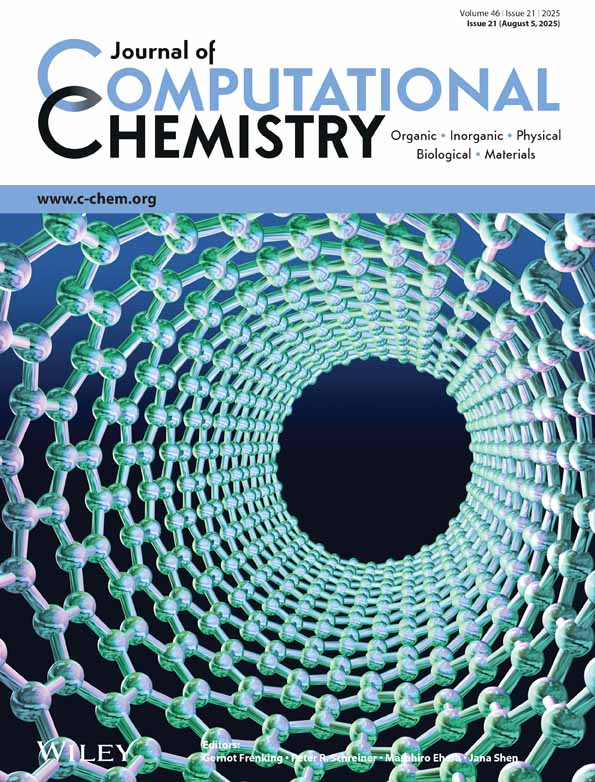Simulation of phase separation in alcohol/water mixtures using two-body force field and standard molecular dynamics
Abstract
Standard molecular dynamics simulations have been carried out on pure alcohols and alcohol/water mixtures. A simple atom–atom force field consisting of Lennard–Jones potentials plus coulombic terms over atomic point charges, but without explicit polarization terms, has been specifically fitted to reproduce several experimental properties of the pure alcohols, and has been used for mixtures by developing combination rules with the TIP3P water model. Densities, enthalpies of vaporization, radial distribution functions, self-diffusion coefficients, and rotational correlation functions of the pure alcohols are well reproduced and compare favorably with those from more sophisticated force fields. Some key aspects of the phase behaviour are correctly reproduced by the molecular dynamics simulation, showing a distinct demixing process for the n-butanol/water mixture as opposed to the stability of the t-butanol/water mixtures. The results demonstrate the ability of a molecular dynamics simulation, even in its standard form and with easily accessible time ranges, but with a carefully optimized force field, to simulate and, to a certain extent, predict the properties of binary mixtures. © 2006 Wiley Periodicals, Inc. J Comput Chem 27: 1211–1219, 2006




